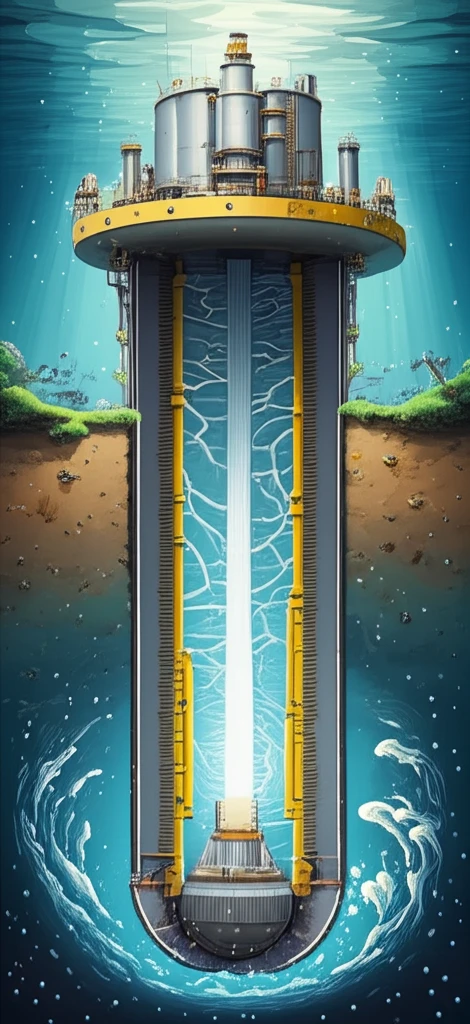
Suction Caissons: How This Genius Tech Keeps Offshore Structures Stable
"Dive into the mechanics behind suction caisson foundations and discover the innovative 'safety mechanism' making waves in offshore engineering. Essential reading for understanding the future of offshore wind energy!"
Offshore wind energy is rapidly expanding, and with it comes the need for innovative foundation solutions. Enter suction caissons: these hollow cylinders, capped with a closed lid, are ingeniously sunk into the seabed using suction. This method is transforming how we anchor offshore structures, offering a blend of stability and environmental responsibility.
The process works by creating a pressure difference. As suction is applied inside the caisson, it pushes downward while also inducing a seepage flow. This ingenious approach reduces soil resistance, making it possible to install these foundations even in dense sand. It's like a gentle, controlled push that minimizes disturbance to the surrounding marine environment.
But what happens when the suction gets too strong? That's where the 'safety mechanism' comes in. Practical installations have revealed that the applied underpressure can sometimes exceed the critical suction limit without causing failure. This intriguing phenomenon is attributed to the pre-loosening effect of the upward seepage flow, which increases soil permeability and redistributes hydraulic gradients, ensuring a stable and secure foundation.
The Science of Suction: How Do Caissons Really Work?

To understand the magic of suction caissons, it's essential to break down the fundamental principles at play. At its core, the suction caisson system leverages pressure differentials to achieve penetration. By pumping water out of the caisson, engineers create a lower pressure environment inside compared to the outside. This pressure difference generates a downward force, pushing the caisson into the seabed.
- Downward Push Force: Created by the pressure difference between the inside and outside of the caisson.
- Seepage Flow: Water movement through the soil, reducing effective stress and soil resistance.
- Soil Liquefaction: The process of reducing soil resistance, making penetration easier.
Looking Ahead: The Future of Offshore Foundations
Suction caissons represent a significant advancement in offshore foundation technology. Their ability to provide stable, reliable support while minimizing environmental impact makes them an ideal choice for the expanding offshore wind energy sector. As research continues to refine our understanding of the 'safety mechanism' and optimize installation techniques, we can expect to see even wider adoption of these innovative foundations in the years to come. The future of offshore energy is being built, quite literally, on the principles of suction and sustainable engineering.
